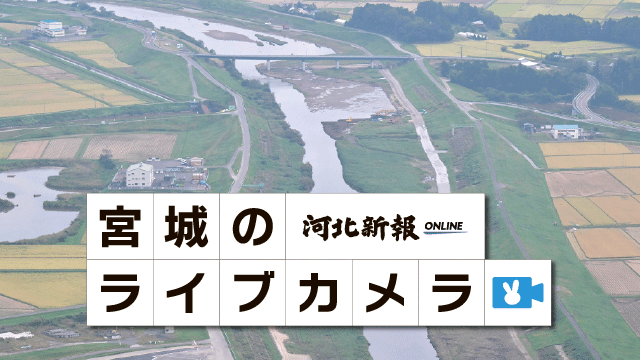Part 6: Shaking (1) Falling Objects / Ceilings and Lights Turn Deadly




During the Great East Japan Earthquake, Tohoku Region was struck by tremors with a maximum seismic intensity of up to 7. Even in inland areas not exposed to tsunami damage, people lost their lives as buildings collapsed and ceilings and light fixtures fell. Naturally, falling objects also affect evacuations in coastal areas. As we try to avert crises during earthquakes, let us also think about how to prepare for the other effects of “the shakes.” ("Preserve Lives and Communities" Investigation team)
Ten People Sacrificed to “Non-Structural Elements”
Lights, ducts and other fixtures that do not form part of a building's load-bearing frame are referred to as “non-structural elements.” In an earthquake, these elements crash to the ground one after the other, becoming deadly weapons to anyone caught beneath.
It was the afternoon of March 11, 2011. In Iwaki City, the Iwaki Business Innovation Center was hosting a presentation on inheritance, sponsored by the Iwaki branch of Fukushima Gyoseishoshi Lawyers Association. There were chairs and tables for about 200 people, and senior citizens filled them all.
Just as the presentation was reaching the halfway point it happens?the whole building shook violently. From above came a clashing noise as the lights and other fixtures in the ceiling crashed against each other. The senior citizens scrambled beneath the tables and huddled there in fear.
Suddenly a black mass tumbled from the ceiling?several light fixtures about two square meters in size. They tangled in the cables and chains that connected them to the ceiling and jerked to a halt mid-fall, dangling a short distance from the floor.
When the shaking subsided somewhat, everyone crawled hurriedly outside, carefully avoiding the lights. Then a voice cried out,
“Someone's still inside!”
Makoto Koizumi (57, a vice-branch manager at the time) looked all around the hall. Near one of the fallen light fixtures, a woman sat slumped.
They carried the woman to the hospital, but the hemorrhage caused when the light struck her head sent her into shock, and she passed away within the day. Those light fixtures were made of iron, and weighed fully 300 kilograms each.
Iwaki experienced shocks of magnitude 6. After the earthquake, Iwaki Central Police Office found that low-strength materials had been used in the construction of the hall, and filed a suit against three of the responsible people at the construction company, accusing them of lethal professional negligence.
Kahoku Shimpo's investigations found that at least ten people nationwide were killed by falling non-structural elements. Counting the woman in Iwaki, Tohoku saw four of those deaths. In Rifu Town, Miyagi Prefecture, a young boy was killed at the Aeon Shopping Center when the ceiling fell in. Roof tile fell in Shirakawa, and a wall collapsed in the Aeon in Soma. In each of those cases one woman was killed.
During the Great East Japan Earthquake, Sanbongi, Osaki City, observed maximum seismic intensity of 5. Standing in Sanbongi General Branch of the city, Kiyoshi Suzuki (52), an assistant manager of the Regional Maintenance Section, was struck speechless at the sight before his eyes.
From the ceiling of the multistory lobby, twenty meters up, the gypsum board was peeling off. The sheets crashed to the floor and crumbled.
The broken gypsum board amounted to about 200 square meters of the ceiling and weighed almost 3 tons altogether. Suzuki reflects, “It would have been horrible if visitors had been underneath.”
According to the Ministry of Land, Infrastructure, Transport and Tourism, there were 2000 incidents of damage or injury by falling objects nationwide, with over 70 people injured. Large facilities, such as the Sendai Mediatheque (a library and arts center) and the “Ra-Ra-Ra Hall” auditorium in the Taihaku Ward's Cultural Center, were especially conspicuous for such incidents. Had conditions been different, they could have become the sites of major tragedies.
To Restore or to Improve: a Matter of Time and Bureaucracy
This certainly is not the first time that an earthquake has caused the fall of non-structural elements. In the case of the earthquake on August 16, 2005, which had a maximum seismic intensity of 6-lower in Miyagi Prefecture, the ceiling over the indoor pool collapsed at the “Spo-park Matsumori” in Izumi Ward, Sendai City. Over thirty people suffered injuries. The national government advised local authorities to make safety improvements to non-structural elements, but had no way to enforce the recommendations. As a result, no truly fundamental changes were made, and accidents reoccurred with every earthquake.
After the 2011 earthquake, efforts to change and improve structures tend to be limited. The Architectural Institute of Japan found in a study that among public and commercial facilities that had suffered falling-object damage, 40% elected to simply restore the buildings to their pre-earthquake state.
The Institute explains, “All the laws and financial aid systems around public facilities assume that you'll restore the facility to its former state, not improve it. Meanwhile in the private sector, there's a tendency to go for restoration because it means less complicated paperwork and lets you reopen for business sooner.”
Nevertheless, there are places that have made drastic changes for safety. A prime example is the JR Sendai Station in Aoba Ward, Sendai, which recorded shocks as strong as 6-lower. 300 meters of drop-ceiling fell onto the bullet train platform. Fortunately it happened at a slow time of day for the station, and no one was hurt.
Afterward, instead of fixing the ceiling, the station stripped the remaining gypsum board away. Visitors to the station now will see the bones of the ceiling laid bare above the platform. East Japan Railway's Sendai Branch explains, “The drop ceiling was only there for aesthetic reasons to begin with. With aftershocks still occurring, we decided that it would be wrong to leave the ceiling in that dangerous state.”
Removing suspended ceilings greatly lessens the danger of falling objects. This strategy is gaining attention from the Ministry of Education, Culture, Sports, Science and Technology (MEXT), which researches earthquake countermeasures in schools. A MEXT investigation found that public elementary and junior high schools nationwide suffered over 3000 incidents of damage by falling objects during the earthquake.
These figures are especially important because schools and their gyms often become shelters and evacuation sites in times of emergency. In September of last year, MEXT advised local governments across Japan to implement safety measures around suspended ceilings, up to and including complete removal.
Some facilities have opted for materials that pose little danger even if they do fall. At the Miraikan in Koto Ward, Tokyo (also called the National Museum of Emerging Science & Innovation), the gypsum-board drop ceiling over the lobby area fell during the Great East Japan Earthquake. Instead of replacing the gypsum board, the Miraikan switched to a lightweight “membrane ceiling”.
This “membrane” is a sort of fabric made of resin-coated fiberglass. It is 0.3 millimeters thick and one square meter of it weighs only 380 grams, or one-fortieth the weight of gypsum board. Even supposing it fell and hit someone, it would not deal a very heavy blow.
Compared to gypsum board, the membrane ceiling is expensive and labor-intensive to install, driving up construction costs. Nevertheless, “If we put it back the way it was, we would only repeat the same disasters. We thought a new kind of restoration was necessary,” says Steering Division head Takanori Sakai.
It was Ken'ichi Kawaguchi, Professor of Spatial Structural Engineering at Tokyo University's Institute of Industrial Science, who advised the Miraikan on the usefulness of membrane ceilings. Investigating the 1995 Great Hanshin Earthquake, he had confirmed many cases of falling ceilings in large event and spectator facilities. In the years since, he has pointed out the dangers inherent in non-structural elements, but those concerns have taken a backseat to anti-seismic reinforcement of building structures.
The Ministry of Land, Infrastructure, Transport and Tourism does plan to make non-structural-element countermeasures compulsory in the near future. However, the new rules would only apply to buildings constructed after April 2014, so they will not affect existing large-scale facilities.
Professor Kawaguchi insists, “Now is exactly the right time for the government to take action and protect people's lives from these non-structural elements.”
Translated by Cecillia Caride
May 18, 2013 (Sat.)
[Japanese] http://www.kahoku.co.jp/special/spe1114/20130518_01.html
 朝刊・夕刊
朝刊・夕刊 記事を探す
記事を探す FAQ
FAQ















